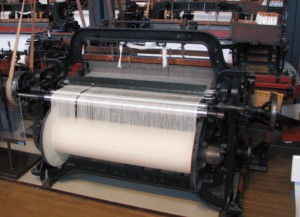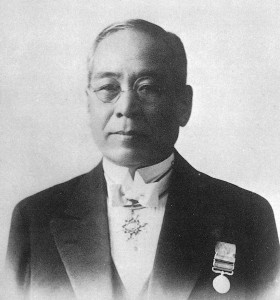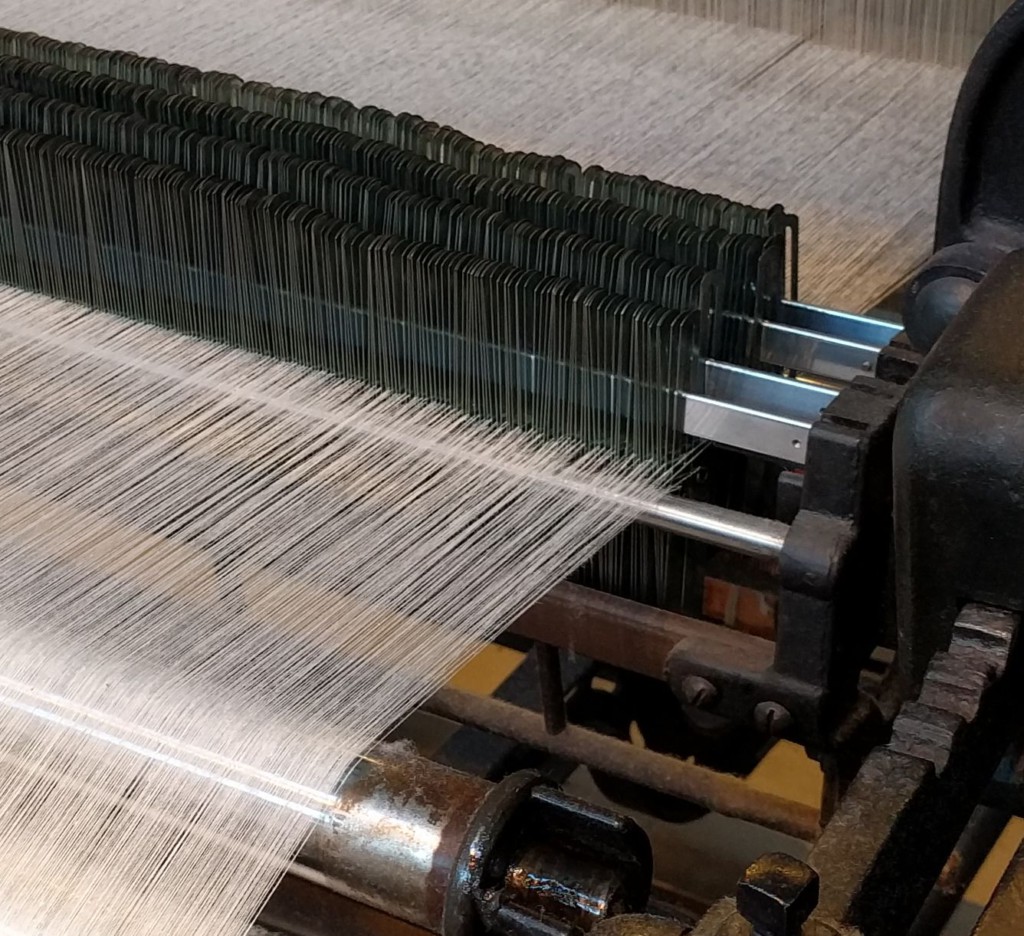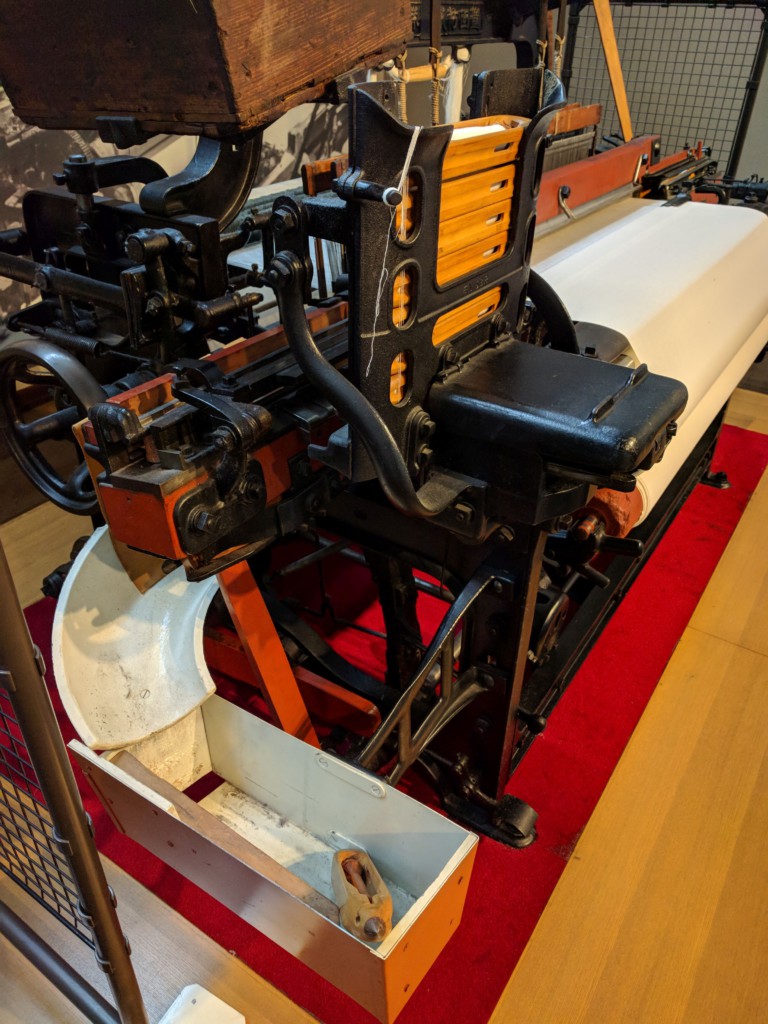 In my last two posts I talked a lot about what jidoka is, and the underlying philosophy. Many articles do so. But there are almost no actual examples out there of jidoka. But without examples it is difficult to really understand a concept. A great historic example of this is the Toyoda Model G automatic loom from 1925. This is well known, but here I would like to show you how it connects to jidoka. I will also give you a more modern example of a product that you may even own.
In my last two posts I talked a lot about what jidoka is, and the underlying philosophy. Many articles do so. But there are almost no actual examples out there of jidoka. But without examples it is difficult to really understand a concept. A great historic example of this is the Toyoda Model G automatic loom from 1925. This is well known, but here I would like to show you how it connects to jidoka. I will also give you a more modern example of a product that you may even own.
Toyoda Automatic Loom Type G

One famous example of jidoka is the Toyoda Automatic Loom Type G, invented and patented in 1925 by Sakichi Toyoda (1867–1930). This was one of many looms invented by this King of Inventors, but it is probably his most famous one.
This loom was able to run almost unsupervised. Routine tasks like restocking yarn could be done while the loom was running, and could be done anytime before the yarn ran out. The loom was also able to detect problems and could shut down. An unskilled worker could easily supervise thirty to fifty looms.
This loom was probably the most advanced loom of its time. The model was so successful that it was also produced by other makers in license from Toyoda. Let me show you what tricks were used in this loom. These are fine examples of the outcome of jidoka: Whenever there is a problem, stop the process immediately, and fix the issue.
Warp Break Auto Stop
 One unique feature was the Warp Break Auto Stop. The warp is a set of parallel strings through which another string (the weft) is woven. If the warp breaks, it has to be fixed quickly. The longer an automatic loom produces with a broken string, the more defective cloth is produced.
One unique feature was the Warp Break Auto Stop. The warp is a set of parallel strings through which another string (the weft) is woven. If the warp breaks, it has to be fixed quickly. The longer an automatic loom produces with a broken string, the more defective cloth is produced.
In olden times, a worker – often a child with lower wages than an adult – had to supervise machines constantly, and if a warp broke, quickly had to tie it back together. Children working with moving machines with little concern for their safety is not a good combination.
The Toyoda Automatic Loom Model G had a novel feature. Every warp had a piece of sheet metal hanging from it. This is shown in the image below. The tension of the warp held the sheet metal up. However, if the warp broke, the sheet metal fell down by a few centimeters. Below the sheet metal was a bar that was connected to the shuttle movement, and hence moved rhythmic back and forth. As long as the warps were intact, there was enough space for this bar to move. However, when a warp broke and fell down, it blocked the movement of the bar. This blockage of the movement immediately stopped the loom and prevented it from producing defective cloth. The shiny metal rods you see in the image below allowed the sheet metal to fall down a fixed distance and also held them in place when the moving bar tried to push them out of the way.
This is a prime example of jidoka. The machine stops automatically if there is an abnormality. The Model G also has a gadget to stop if the weft breaks.
The following video shows how the system works (the warp break auto stop starting at 3:19).
The Automatic Shuttle-Change
The Model G also had an automatic shuttle change, shown below. The shuttle is a small device containing the weft and is moved back and forth through the weave. In the picture below, these are the stack of wooden “ships” above the center, and an empty shuttle can be seen below in the white box.
Previously, if the shuttle was empty, the loom had to be stopped and a new shuttle had to be added. The Model G does this automatically. The operator had to restock a supply of shuttles, but this could be done while the machine was running. Even better, the operator could add seven or eight shuttles at a time, and could refill anytime when it suited the operator’s availability. The machine automatically detected if a shuttle was empty and kicked a new shuttle in, which automatically ejected the empty shuttle. The process could continue without interruption, so no immediate attention of the operator was necessary.
This is also an example for jidoka. But now you may be wondering something. Jidoka is about stopping the process automatically in case of abnormalities. But here, this automatic shuttle change is exactly there so as NOT to stop the machine. Here, you have no stops of the machine, how can this be jidoka?
Well, jidoka is about stopping the machine automatically. But an optional next step is to figure out how to prevent this stop from ever happening again. This is what happened here. Predecessors of this machine have been stopped (manual or automatic) millions of times to add a new shuttle. Sakichi Toyoda worked with the problem and resolved it. Now the machine no longer has to stop. Hence, it is the ultimate form of jidoka: Make a machine that can run without stops!
Example: Laser Printer
Let me show you another example of jidoka, a normal laser printer. Let’s start with the automatic stops.
Empty Toner
 Any modern printer stops automatically if the toner (or ink) is low. There is (little) risk of defective prints due to lack of toner. If the printer would not stop automatically, you would waste paper. In a worst case you would print a larger document where the first pages are good but the subsequent pages decrease in quality. If this document goes to your customer or boss, it would make you look unprofessional.
Any modern printer stops automatically if the toner (or ink) is low. There is (little) risk of defective prints due to lack of toner. If the printer would not stop automatically, you would waste paper. In a worst case you would print a larger document where the first pages are good but the subsequent pages decrease in quality. If this document goes to your customer or boss, it would make you look unprofessional.
Of course, printer manufacturers err very much on the conservative side, meaning you have to buy more toner or ink. After all, for most small printers you get the printer almost free and pay through the ink. But I digress.
Paper Jam
 Another common example of an automatic stop in a printer are paper jams. If the printer detects that something odd is happening with the paper, it will stop the print and alert you to the issue, often with some indication of which part of the printer is in trouble. After the jam is cleared, the print continues. If the printer would not stop, you would waste time, toner, and paper, and potentially damage your printer.
Another common example of an automatic stop in a printer are paper jams. If the printer detects that something odd is happening with the paper, it will stop the print and alert you to the issue, often with some indication of which part of the printer is in trouble. After the jam is cleared, the print continues. If the printer would not stop, you would waste time, toner, and paper, and potentially damage your printer.
Both the empty toner automatic stop and the paper jam automatic stop are examples of jidoka. Granted, these are not fancy examples, and you may take them for granted. But just for an instance, imagine the printer would NOT stop. We got used to the comfort, and may complain about the stop, but it is a nice example of jidoka that saves you time and money.
Paper Feed – Less Changeover
 Another example with a printer is the automatic paper feed for blank paper. This is an example where a long (looong) time ago a worker had to feed every page individually into the printer while the printer was stopped. Over time, these stops were resolved, and with the paper tray in a modern printer you can print hundreds of pages before you have to refill the printer. Again, not a fancy example, but one that saves you a lot of time. With lean, you don’t need fancy and shiny bells and whistles, as long as it makes your work easier.
Another example with a printer is the automatic paper feed for blank paper. This is an example where a long (looong) time ago a worker had to feed every page individually into the printer while the printer was stopped. Over time, these stops were resolved, and with the paper tray in a modern printer you can print hundreds of pages before you have to refill the printer. Again, not a fancy example, but one that saves you a lot of time. With lean, you don’t need fancy and shiny bells and whistles, as long as it makes your work easier.
Well, here we are with two machines that are the result of a jidoka process. Like many things in lean, this is a never-ending process. For your printer you probably can easily come up with a few problems that still causes stops. Could you reduce the likelihood of a paper jam? Could you reduce the likelihood of warp breaking? Continuous improvement never ends.
Wow, over four thousand words on jidoka across three blog posts. And all of this because Sammy Obara at the Lean Poland Conference mentioned in passing that there is very little information about jidoka online. Well, challenge accepted 🙂 . It took me quite a bit longer than usual to write these posts, and I did rewrite quite a bit of it, changing my mind a few times. But now I feel that it is a well-rounded series of posts. I learned a lot, and I hope you learned a lot too. Now go out, get your machines to stop (automatically!) if there is a problem, and organize your industry!



Hello Christoph,
I think, the concept of Jidoka is expressing the mindset of “makers” how to control their “stuff” (You know, “Zeug” or “Handwerkszeug” in German). An honorable craftsman should/would never allow his stuff to take over control. And that is the core of “jidoka”. All the machines/automatic looms invented by the engineers around 1900 were based on the paradigm, that the workers have to “serve” the “brillant and superior ratio” – because the rationalisation/ science/technology made the social and technological progress obviously possible. To worship the ratio has a long tradition in Europe since the Enlightment – because it meant and caused an enormous social and economical progress.
But Toyoda, a son of a carpenter, saw, that this kind of “automation” didn’t help the skilled weavers to make “more of themselves”.
The classic definition of Jidoka reflects two points: 1) Stop the machine as soon as a problem occurs 2) Think about men and machines separately.
1) is easy to understand, when you think about the machine not as a machine, but as an apprentice in ancient times. You ask your apprentice to do something, and maybe he/detects a problem. If you are not sure, that the boy/girl will always tell you, when a problem occurs, this boy/girl will be no help for you, because you have to observe him/her the whole time – what would you do? Right, every parent who leaves a child alone with a task, will tell him, too: “Call me, when something goes wrong!”
2) is also quite easy to understand, when you see, that it is about the mindset of the maker, who wants to control his stuff. I often hear managers complain about a production line, about their OEE, for example – and then they don’t differentiate between their equipment and their organisational (team) issues. They think, that people have to “function” – and this is the crucial point.
If you and your team want to control the whole stuff (your equipment and your material) perfectly (if you want to master the stuff), you have to differentiate between your equipment and the people. Its the same like a kitchen: you never should expect, that you’ll be able to cook like a five-star-cook, just because you bought an expensive kitchen. Even if you follow the handbook/cookbook meticulously. “Functioning” is never, never to be mixed up with “mastering”. If you want to master something(and some things), then you have to think about the equipment and the people separately.
So, it is not only about the machines – it is about an attitude, how men think about “useful and helpful inventions”, man-made things(machines, systems, organisations, everything). Do you want to serve the superior ratio, or are all these things meant to help the human being to fulfil the dreams? If you don’t want to lose control, you have to built them in a way, that they tell you, whenever something goes wrong.
You can’t, for example, measure the ‘quality’ of a ‘thing’ without knowing its standard or purpose or intent.
To be able to say that someone gave you ‘good’ directions would require that
A) the purpose of directions is to help you arrive somewhere you wouldn’t otherwise be able to without explanation and
B) that the directions either did or could have enabled that to happen.
The same with anything else–cars, apps, books, dancing–but the more we leave pragmatism behind in search of abstraction, the less objective and clear our definition of ‘good’ likely is; it’s easier to say with confidence that a recipe’s instructions were good than the result of that recipe (i.e., the food) because in-between the recipe and the result (i.e., the cause and the effect) is human fallibility. Or just plain human nature.